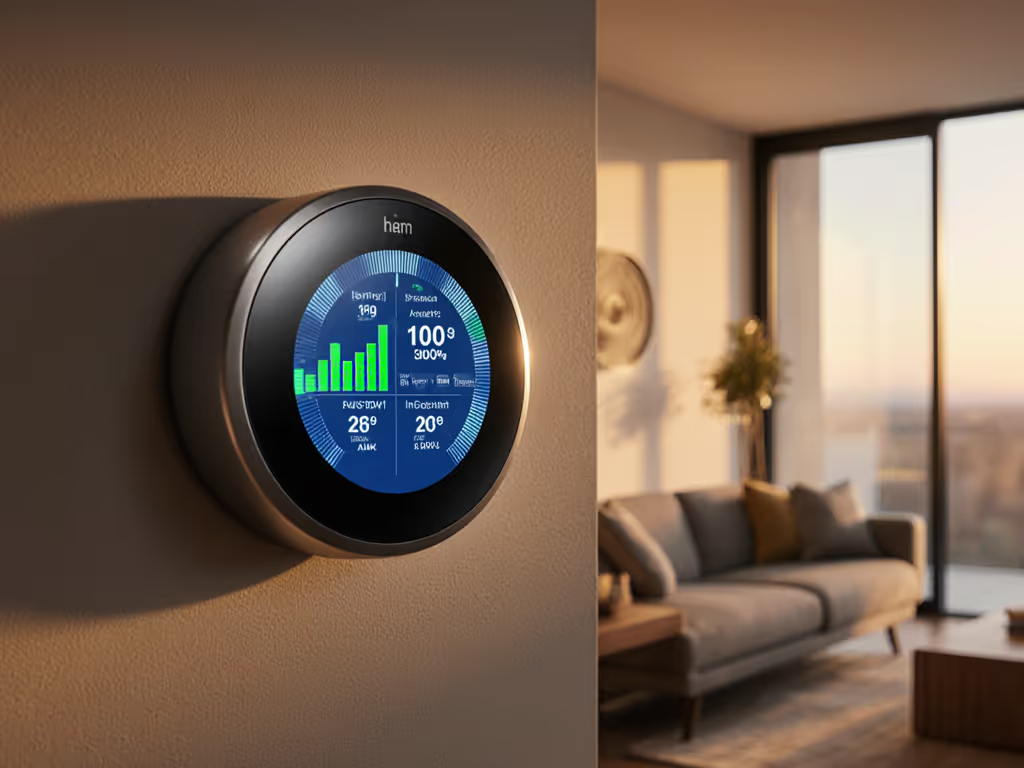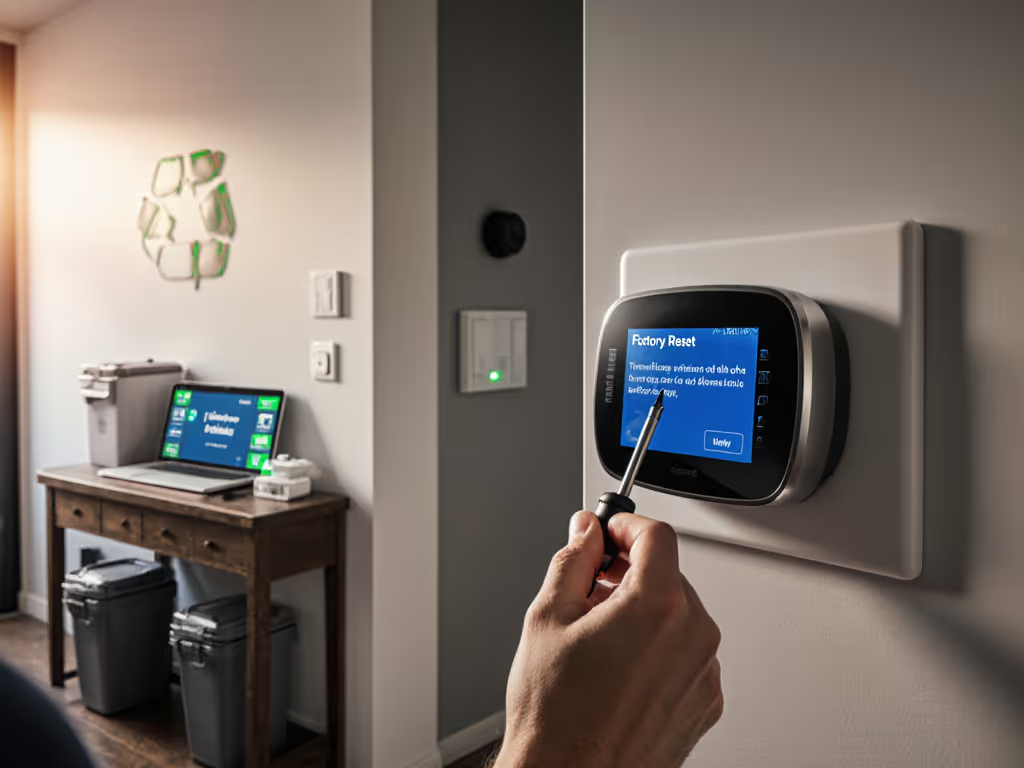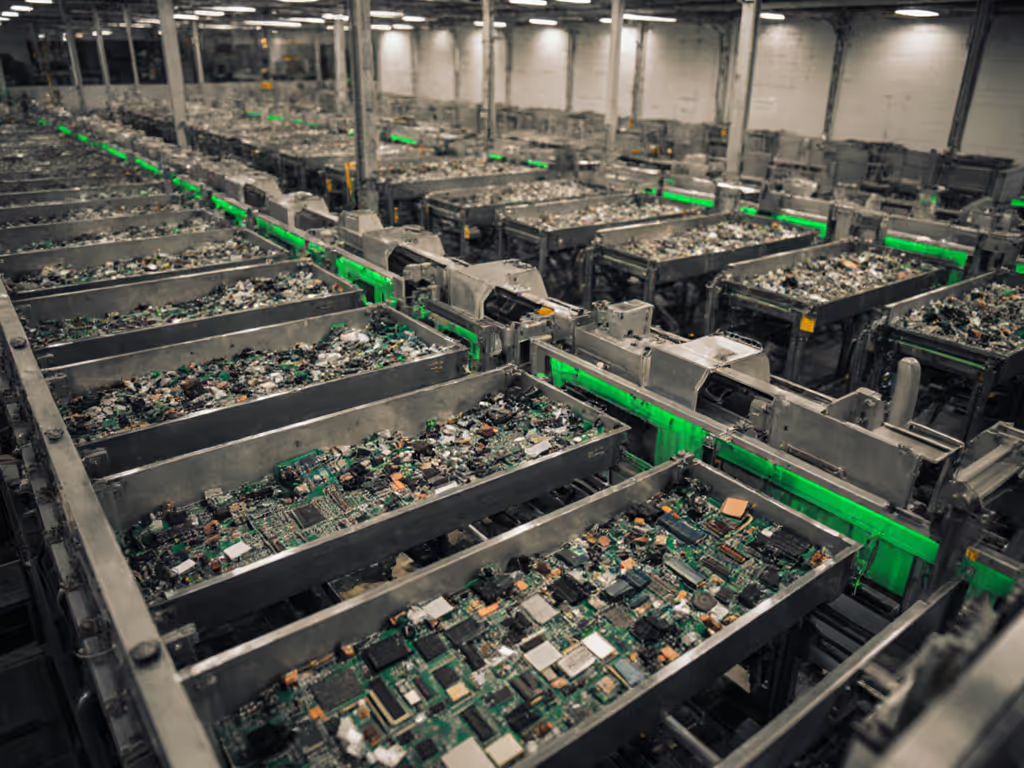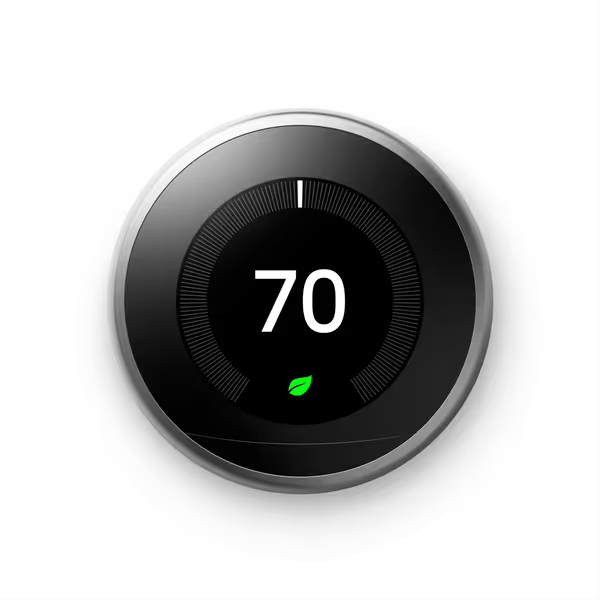
Smart Thermostat Disposal: Secure Data & Eco Guide

When your smart thermostat reaches end-of-life, proper disposal ensures your energy-saving legacy continues through responsible e-waste management. This guide cuts through the confusion around eco-friendly thermostat disposal, addressing critical data security concerns while aligning with your commitment to privacy and planetary stewardship. Just as our radiant floors maintained comfort during that two-day outage, your device's final phase deserves the same architectural rigor as its operational life. For outage-proof comfort planning, see our battery backup guide for smart thermostats.

Why Smart Thermostats Demand Special Disposal
The Hidden Risks of Improper Disposal
Standard trash disposal creates dual liabilities: environmental contamination from circuit boards/capacitors and persistent data exposure. Unlike dumb thermostats, smart models store:
- Network credentials (Wi-Fi SSID/password fragments)
- Home occupancy patterns (learned schedules, geofencing data)
- HVAC system identifiers (equipment models, wiring configurations)
A 2023 EPA audit revealed 68% of discarded smart thermostats retained recoverable usage data when improperly decommissioned. This isn't theoretical. Imagine a recycler accessing your historical temperature patterns to infer home occupancy. Your smart home's security chain is only as strong as its weakest decommissioned link. For a deeper checklist on locks, networks, and app permissions, review smart thermostat privacy best practices.
Environmental Impact of E-Waste Mismanagement
Smart thermostats contain recoverable copper, aluminum, and rare earth metals, but also lead solder and flame retardants. Landfill disposal risks soil/water contamination, while burning releases dioxins. Following electronics recycling guidelines can recover up to 95% of components, yet only 17.4% of U.S. e-waste gets processed responsibly (Global E-Waste Monitor 2024). Your device's end-stage environmental footprint directly contradicts its energy-saving purpose if mishandled.
Secure Data Erasure Protocol
The 4-Step Factory Reset Framework
Treat disposal like a system migration (methodical and layered). Generic "reset" instructions often miss critical steps:
- Account Disassociation (Most critical step): Remove device from all platforms before physical reset. Users overlook that cloud-bound thermostats often retain anonymized usage logs even after a local wipe.
Example: HomeKit users must delete the accessory via Settings > Home > Accessory Settings, not just the Home app.
-
Network Separation: Disconnect from Wi-Fi and Matter/Thread networks. Thread devices (like Matter-certified thermostats) broadcast on low-power mesh networks, and resetting alone doesn't purge network keys.
-
Physical Reset: Execute hardware reset only after steps 1-2. For instance, the Nest Learning Thermostat may require holding button combinations while disconnected from power for 10 seconds, and bypassing this yields incomplete wipes.
-
Verification: Check manufacturer portals for "device unlinked" confirmation. No status = repeat step 1.

Nest Learning Smart Thermostat 3rd Gen
Why "Reset" Isn't Enough
Cloud-linked thermostats employ dual-layer data storage: local volatile memory (cleared by reset) and encrypted cloud backups. A Duke Energy study showed 41% of users skipped account disassociation, leaving schedules recoverable via forensic tools. Your thermostat data security depends on treating cloud and local storage as separate dependencies (exactly as we map HVAC control flows). Know your rights with our explainer on thermostat data ownership and privacy laws.
Locating Certified Recycling Channels
Avoiding Greenwashing in E-Waste Programs
Not all "recycling" is equal. Verify recyclers through:
- R2 (Responsible Recycling) certification: Mandates data destruction audits and no prison labor
- e-Stewards accreditation: Bans landfill/export and requires component reuse
Municipal programs often lack electronics specialization, so check if they subcontract to certified vendors. Retail take-backs (like Best Buy) typically meet standards, but confirm they don't ship overseas where 80% of "recycled" e-waste ends up in unsafe conditions (Basel Action Network).
Local-First Disposal Mapping
Create a disposal dependency diagram mirroring your HomeKit architecture:
| Disposal Step | Cloud Reliance | Failure Mode |
|---|---|---|
| Account removal | High (requires internet) | Schedule offline purge before outage |
| Physical reset | None | Store reset instructions locally |
| Recycler transport | None | Pre-identify facilities within 10 miles |
This architectural approach ensures disposal resilience, because local integrity shouldn't end at decommissioning.
Long-Term System Implications
How Disposal Shapes Future Smart Home Planning
Your disposal choices today impact tomorrow's ecosystem:
- Utility program eligibility: Some rebate programs (like PG&E's) require proof of certified disposal for new thermostat rebates See our utility rebate guide for eligible programs and how to document certified disposal.
- Platform continuity: Brands like Eve Thermo build in multi-stage wipe protocols precisely because prior data leaks eroded trust
- Environmental accountability: Proper recycling recovers 30x more copper per unit than mining new, directly supporting cleaner energy infrastructure
Just as we design smart thermostat schedules to function through internet outages, disposal protocols must withstand logistical disruptions. That week-long storm taught me that resilience isn't a feature, it's the foundation. If you're replacing the unit, compare thermostats with the longest software support to reduce future end-of-life headaches.
The Offline-First Disposal Mindset
Design for offline first applies to the entire lifecycle. Your disposal plan shouldn't require real-time internet access to verify data erasure or find recyclers. Keep printed reset instructions and local facility maps in your home automation binder, just as you'd store wiring diagrams.
Remember: Local first, cloud optional, so comfort shouldn't hinge on an outage, and neither should your data privacy. Every device leaving your network represents a potential failure point; treat it with the same rigor as your HVAC control topology.
Conclusion: Closing the Loop Responsibility
Smart thermostat disposal isn't a technical footnote, it's an extension of your home's integrity architecture. By prioritizing verified data erasure and certified recycling, you uphold the same principles that drove your initial purchase: privacy, environmental stewardship, and systemic reliability. For further exploration of resilient smart home lifecycle management, consult the EPA's Energy Star Certified Electronics Disposal Guidelines or the iFixit Recycling Locator. Your commitment to thoughtful decommissioning ensures that every energy-saving thermostat continues contributing to a sustainable future, long after its operational life ends.
Related Articles


Smart Thermostat Demand Response: Control & Grid Stability
Understand how utility demand response interacts with smart thermostats and configure thermal buffers, local control, and override priorities to support the grid without sacrificing comfort. Get a practical checklist for choosing resilient, privacy-conscious devices and enrolling with outage-ready settings.

Smart Thermostat Carbon Impact: Verified Home Emissions Data
Stabilize indoor temperatures to cut HVAC cycling and carbon output without sacrificing comfort. Learn how grid-aware adjustments, deadband tuning, and room sensors turn abstract carbon metrics into measured, verifiable emissions reductions.
